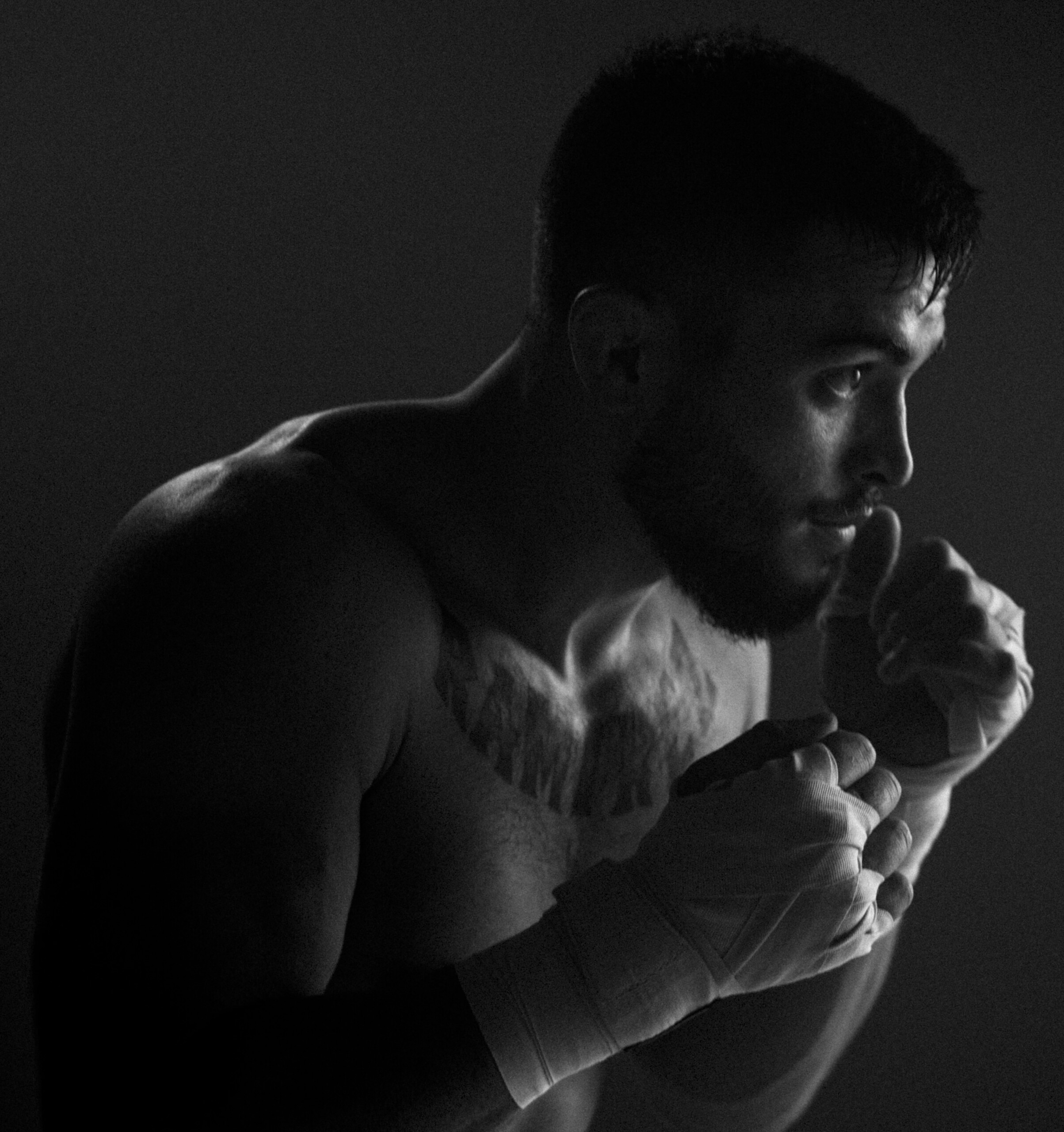By Danny Jones – @Tidy_MMA; Image provided by Mitch Ramirez; photo credit to Andrew Storer.
In 2016, a comprehensive investigation by the Utah Juvenile Justice Working Group identified a litany of shortcomings with Utah’s juvenile justice system.
From a lack of standardization, to a lack of legal representation, the findings highlighted a system littered with disparity.
Only the accounts from those subjected to the juvenile justice system, however, elucidate the true cost of these failings.
Returning LFA athlete Mitch Ramirez endured Utah’s juvenile justice system in his youth. His experience not only adds credence to the aforementioned 2016 report, but presents a narrative more akin to perpetuation than rehabilitation.
The majority of those entering Utah’s juvenile justice system – like Ramirez – were low-level offenders; a factor that contributed to Utah’s juvenile arrest rate exceeding the national average.
Arrested for the equivalent of petty theft, it was the ensuing probation that drove Ramirez deep into the justice system.
“You’re being singled out, and being treated like a criminal in a way for things that are really petty” Ramirez says. “For instance, multiple times when I was in junior high in high school, my probation officer would come to check on me. He would give me a drug test for instance, but there would be a scene about it. He’s there, he’s got his badge and everything else, and if I were to fail that – I’ve smoked weed or done something like that as a high school kid – they would arrest me right there in cuffs, embarrass me, and walk me out of the school like that”.
Irrespective of the initial offense, all youth offenders on probation in Utah’s juvenile justice system adhered to the same 18 standard conditions. However, Utah’s justice system lacked standardized guidelines for responding to technical violations. As such, responses to violations, including those that triggered contempt, were disparate.
“[Testing positive for marijuana is] not technically a crime – that’s a violation of the probation I was on” Ramirez explains. “But that was enough for them to start putting me in to the detention centers, and these programs. So now, I’m on probation for a petty theft, something stupid like a shoplifting type dumbass kid thing… And that ended up with me getting into this kind of trouble that lead to this. Once they got their hands on me, they never let go of me”.
Ramirez’s notion of ensnarement by the justice system echoes another major finding of the 2016 report; the stalling of youth within the system. In the absence of set probation, supervision, and disposition durations, youth remained under court jurisdiction for extended periods – often years.
“Essentially that’s the kind of way it worked” Ramirez says. “I would go to jail – essentially juvenile hall – for a failed marijuana test that was against the rules of [the] probation I was on, for an unrelated charge. They put me in detention for two weeks until I [tested negative], and then they would let me out. If I did it again, they would put me back in for two weeks again”.
Incredibly, most youth subjected to out-of-home placements under the Utah juvenile justice system had not committed a felony, but had instead committed a misdemeanor (or equivalent). Contempt charges were a significant contributor to such out-of-home placements – as was the case for Ramirez. However, out-of-home placements failed to lower recidivism; moreover, recidivism was enhanced for those whose initial risk to reoffend was low.
“All of it related to failing these little drug tests that I was getting given off of petty juvenile crimes – misdemeanors – that I was getting in trouble for” Ramirez explains. “Then, in these detention centers, you’re in there with kids that are in there for other crazier [offenses]. So I’m getting in fights all the time. I’m learning from these kids. These kids are gangsters; little gangbangers. Everybody in there is up to no good. It’s making it worse, and it’s also becoming my identity. I’m being told that because I like to smoke weed and like to hang out and party with my buddies as a high school kid, that I’m a criminal and a drug addict”.
Following a number of positive tests for marijuana, Ramirez was issued 600 hours of community service for contempt of court. Ramirez completed his community service entirely at a work camp; in all, it would take him four months to fulfill the 600 hours.
“[They] shaved my head, made me wear army boots [and] army camo’s all day” Ramirez reveals. “I was literally getting into fights every week with these dudes [other offenders]. Our facility was within eyeshot of the prison towers and the prison yard for the adults; it was right there, in the same prison complex. I had to work every day, all day, for four months – and they shaved my head every two weeks, as a 16-year-old kid! Telling this is outrageous to be honest with you”.
According to the 2016 report, every individual placed in a work camp cost the state $208 a day – a cost heavily outweighing the potential restitution generated from an individual’s daily community service. Yet, despite the extraordinary cost of out-of-home placements, recidivism remained comparable to that of community supervision, which was significantly less expensive.
Of course, such out-of-home placements also subjected youth to other offenders for long durations.
“That’s where you live” Ramirez says. “That’s where you are living, going back to these places. These are the people that now accept you. It becomes an identity because now not only are [offenders] accepting of you, other people [non-offenders], they aren’t as accepting of you… it’s progressive. It drives to more crime, and it drives to more normalization, and more ostracization”.
Ramirez, who was repeatedly punished by Utah’s juvenile justice system for marijuana-related probation violations, later became addicted to heroin; a harrowing example of the system’s major failure in tackling substance abuse. Ramirez, however, was not surprised by his decent into harder drugs.
“For me, mentally, it’s not that big of an evolution that over the years – to one day – I get the opportunity to do that heroin” Ramirez admits. “This is the crowd of people that I’ve been surrounded with, lived with, shared rooms with my whole juvenile/teenage year life. It’s to a certain point normal. All it takes is that, and now you’re off to the races – and that’s kinda really what happened to me. Being in these environments, [when] I shouldn’t have been in those environments for what I was doing”.
Throughout his experience, Ramirez witnessed offenders who wanted to turn things around. Tragically, he would see those same offenders lose hope after years of trying, conceding to their fates. With the odds continuously stacked against offenders, Ramirez watched individuals in similar situations to his own succumb to addictions, imprisoned, or lose their lives.
“I have seen tragedies” Ramirez admits. “Lives lost due to an inability to get a good lawyer or getting assigned a public defender that wants to be a prosecutor, that doesn’t give a damn about your life; thinking you should just go to jail. Now, you’ve got five years, and you’ve lost your job, and you’ve lost everything. I’ve seen so many tragedies in that form – justice tragedies of just lives completely destroyed”.
In 2017, the introduction of House Bill 239 brought about a set of reforms to Utah’s juvenile justice system. Per a 2021 Utah Department of Human Services article, these reforms welcomed a number of positive changes, including a 46% decrease in low-risk offender detention placements.
For those like Ramirez, however, such changes have arrived too late. Ramirez ultimately reoffended and was later imprisoned as an adult.
Attesting to his character, Ramirez turned his life around; his days of addiction and correction exist only as distant memories. His transformation, however, was not because of the justice system.
“Honestly it was just extreme accountability” Ramirez admits. “It was me. It wasn’t like a programme they put me into, it wasn’t anything like that. For me, it was finally my life had progressed to a point where I suffered such extreme consequences physically, emotionally, everything across the board”.
Having since left Utah, Ramirez now resides in Las Vegas, Nevada.
Training out of Syndicate MMA, Ramirez’s life is now centered around his flourishing professional mixed martial arts career.
On December 15th 2023 – over four years after making his promotional debut at LFA 75 – Ramirez returns to LFA. Currently holding a 7-1 professional record, he will look to secure his eighth professional victory against 5-0 Aireon Tavarres on the main card of LFA 173 – LFA’s inaugural Las Vegas event.
As Ramirez competes at the iconic Palms Casino Resort this Friday, one must take a moment to comprehend his remarkable transformation. Through his own sheer determination, Ramirez pulled himself out of a life of adversity, and set a new trajectory.
In every essence of the word, Ramirez is a fighter.
Whilst his professional career continues to reach newer heights, however, Ramirez remains candid and transparent of his experiences, utilizing his platform to share his story.
“One of the reasons why I share my story…for one I want to help people” Ramirez admits. “I want what I went through to make a difference somehow, and one of the biggest ways I look at that is bringing awareness to the story”.
The author extends his utmost gratitude to Mitch Ramirez for making this article possible.







